The Running-in of Lubricated Metal-Metal Contacts—A Review on Ultra-Low Wear Systems
Abstract
1. Introduction
2. Friction and Wear Behavior
2.1. General Friction and Wear Trends
2.2. The Energetic View on Friction and Wear
2.3. Sensitivity and Stability
2.4. Evaluation of Running-in Wear
- the wear rate immediately after a variation of the operating conditions towards higher loads ,
- the period of time t until a constant value of wear rate is reached,
- the wear rate upon reaching a stationary wear behavior .
3. Running-in Performance
3.1. Running-in Corridor
3.2. Structural and Chemical Evolution
4. Running-in Optimization
4.1. Parameter Fields
4.2. Pre-Conditioning
5. Testing
5.1. Continuous Wear Measurement
5.2. Analytics
6. Conclusions
- The running-in is the phase in the lifetime of a tribological system when the most important parameters such as friction coefficient, wear rate, stability and sensitivity become determined.
- Only adequate stressing conditions initiate this type of running-in. In most of the cases running-in can be achieved, when the initial stressing conditions are located inside an appropriate energetic corridor.
- The running-in generates a third body characterized by dissipative surface structures, nano-crystalline grain structure, the incorporation of foreign elements by plastic flow and mechanical intermixing. The third body is responsible for ultra-low wear and low friction.
- Running-in can be enforced by optimized parameter fields and by adequate sample finishing.
- The course of the running-in can be monitored by radionuclide technique and the properties of the third body can be evaluated by surface science methods.
Conflicts of Interest
References
- Rigney, D.A. Transfer, mixing and associated chemical and mechanical processes during the sliding of ductile materials. Wear 2000, 245, 1–9. [Google Scholar] [CrossRef]
- Scherge, M.; Shakhvorostov, D.; Poehlmann, K. Fundamental wear mechanism of metals. Wear 2003, 255, 395–400. [Google Scholar] [CrossRef]
- Dienwiebel, M.; Scherge, M. Fundamentals of Friction and Wear on the Nanoscale; Springer: Berlin, Germany, 2014. [Google Scholar]
- Bowden, F. A review of the friction of solids. Wear 1958, 1, 333–346. [Google Scholar] [CrossRef]
- Shakhvorostov, D.; Poehlmann, K.; Scherge, M. An energetic approach to friction, wear and temperature. Wear 2004, 257, 124–130. [Google Scholar] [CrossRef]
- Linsler, D.; Schroeckert, F.; Scherge, M. Influence of subsurface plastic deformation on the running-in behavior of a hypoeutectic AlSi alloy. Tribol. Int. 2016, 100, 224–230. [Google Scholar] [CrossRef]
- Scherge, M.; Poehlmann, K.; Gerve, A. Wear measurement using radionuclide-technique (RNT). Wear 2003, 254, 801–817. [Google Scholar] [CrossRef]
- Brink, A.; Lichtenberg, K.; Scherge, M. Influencing the tibological performance by different initial microstructures and adjusting stressing levels during the running-in. Wear 2016, 360-361, 114–120. [Google Scholar] [CrossRef]
- Linsler, D.; Schlarb, T.; Weingaertner, T.; Scherge, M. Influence of subsurface microstructure on the running-in of an AlSi alloy. Wear 2015, 332–333, 926–931. [Google Scholar] [CrossRef]
- Scherge, M.; Linsler, D.; Schlarb, T. The running-in corridor of lubricated metal–metal contacts. Wear 2015, 342–343, 60–64. [Google Scholar] [CrossRef]
- Antusch, S.; Dienwiebel, M.; Nold, E.; Albers, P.; Spicher, U.; Scherge, M. On the tribochemical action of engine soot. Wear 2010, 269, 1–12. [Google Scholar] [CrossRef]
- Scherge, M.; Boettcher, R.; Kuerten, D.; Linsler, D. Multi-Phase Friction and Wear Reduction by Copper Nanopartices. Lubricants 2016, 4, 36. [Google Scholar] [CrossRef]
- Popov, V.; Kroener, E. Theory of elastoplastic media with mesostructure. Theor. Appl. Fract. Mech. 2001, 37, 299–310. [Google Scholar] [CrossRef]
- Shakhvorostov, D.; Gleising, B.; Buescher, R.; Dudzinski, W.; Fischer, A.; Scherge, M. Microstructure of tribologically induced nanolayers produced at ultra-low wear rates. Wear 2007, 263, 1259–1265. [Google Scholar] [CrossRef]
- Linz, M.; Ripoll, M.R.; Gachot, C.; Pauly, C.; Franek, F.; Muecklich, F. On the competition between plastic deformation and material detachment in ferritic/pearlitic steel under boundary lubrication. Wear 2017, 376–377, 813–821. [Google Scholar] [CrossRef]
- Scherge, M.; Brink, A.; Linsler, D. Tribofilms Forming in Oil-Lubricated Contacts. Lubricants 2016, 4, 27. [Google Scholar] [CrossRef]
- Schiøz, J.; Di Tolla, d.F.; Jacobsen, K.W. Softening of nanocrystalline metals at very small grain size. Nature 1998, 391, 561. [Google Scholar] [CrossRef]
- Arzt, E. Size effects in materials due to microstructural and dimensional constraints: A comparative review. Acta Mater. 1998, 46, 5611–5626. [Google Scholar] [CrossRef]
- Gleiter, H. Materials with ultrafine microstructures: Retrospectives and perspectives. Nanostruct. Mater. 1992, 1, 1–19. [Google Scholar] [CrossRef]
- Chokshi, A.; Rosen, A.; Karch, J.; Gleiter, H. On the validity of the hall-petch relationship in nanocrystalline materials. Scr. Metall. 1989, 23, 1679–1683. [Google Scholar] [CrossRef]
- Shakhvorostov, D.; Poehlmann, K.; Scherge, M. Structure and mechanical properties of tribologically induced nanolayers. Wear 2006, 260, 433–437. [Google Scholar] [CrossRef]
- Kragelsky, I.V.; Dobychin, M.N.; Kombalov, V.S. Chapter 6—Friction on Impact. In Friction and Wear; Kragelsky, I.V., Dobychin, M.N., Kombalov, V.S., Eds.; Elsevier: Pergamon, Turkey, 1982; pp. 208–218. [Google Scholar]
- Godet, M. The third-body approach: A mechanical view of wear. Wear 1984, 100, 437–452. [Google Scholar] [CrossRef]
- Fischer, A.; Weiss, S.; Wimmer, M.A. The tribological difference between biomedical steels and CoCrMo-alloys. J. Mech. Behav. Biomed. Mater. 2012, 9, 50–62. [Google Scholar] [CrossRef] [PubMed]
- Quinn, T.; Rowson, D.; Sullivan, J. Application of the oxidational theory of mild wear to the sliding wear of low alloy steel. Wear 1980, 65, 1–20. [Google Scholar] [CrossRef]
- Blok, H. The flash temperature concept. Wear 1963, 6, 483–494. [Google Scholar] [CrossRef]
- Kuhlmann-Wilsdorf, D. Flash temperatures due to friction and Joule heat at asperity contacts. Wear 1985, 105, 187–198. [Google Scholar] [CrossRef]
- Volz, J. Erstellung Optimierter Einlaufprogramme von Dieselmotoren; Karlsruhe Institute of Technology: Karlsruhe, Germany, 1977. [Google Scholar]
- Berlet, P.; Dienwiebel, M.; Scherge, M. The effect of sample finishing on the tribology of metal/metal lubricated contacts. Wear 2010, 268, 1518–1523. [Google Scholar] [CrossRef]
- Scherge, M.; Martin, J.; Poehlmann, K. Characterization of wear debris of systems operated under low wear-rate conditions. Wear 2006, 260, 458–461. [Google Scholar] [CrossRef]
- Ditroi, F.; Takacs, S.; Tarkanyi, F.; Reichel, M.; Scherge, M.; Gerve, A. Thin layer activation of large areas for wear study. Wear 2006, 261, 1397–1400. [Google Scholar] [CrossRef]
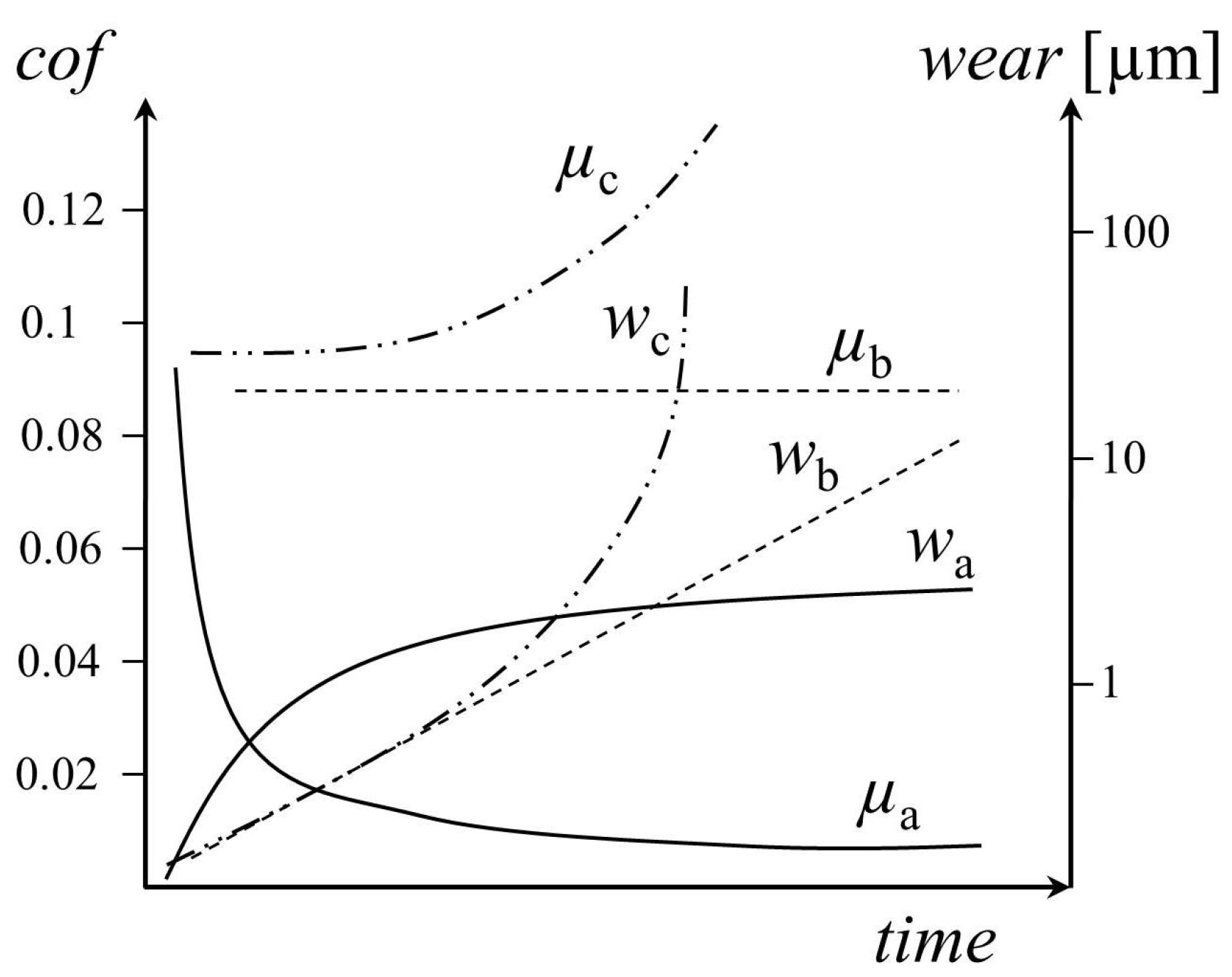
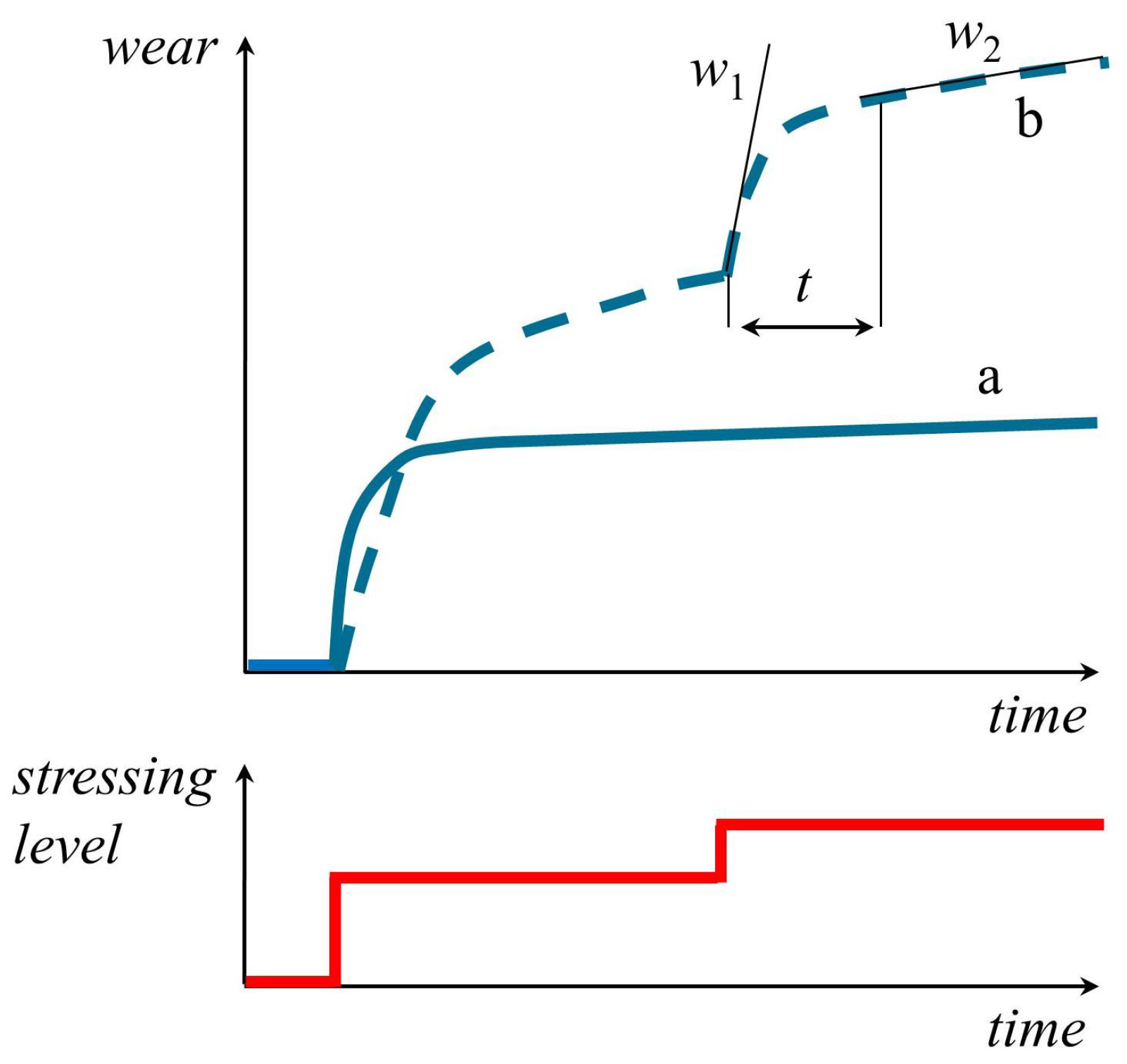
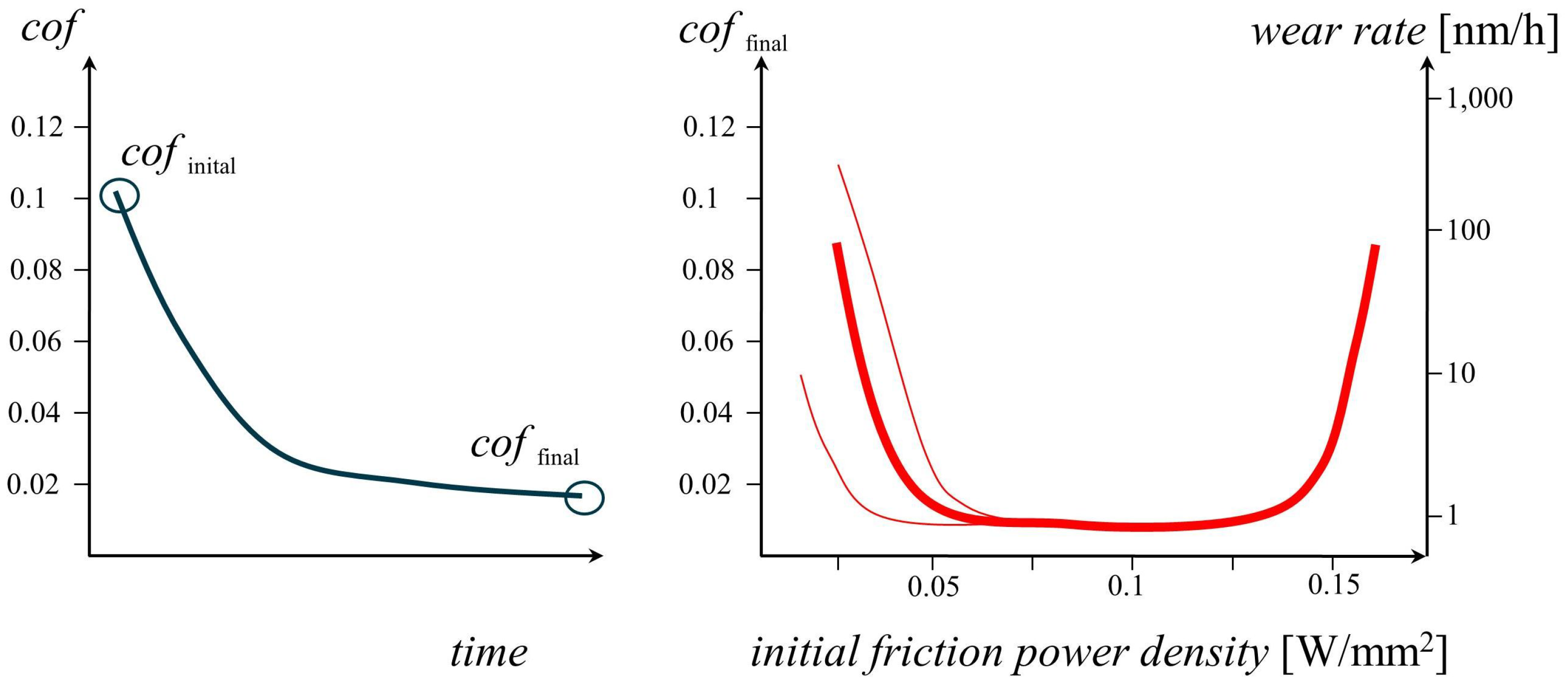
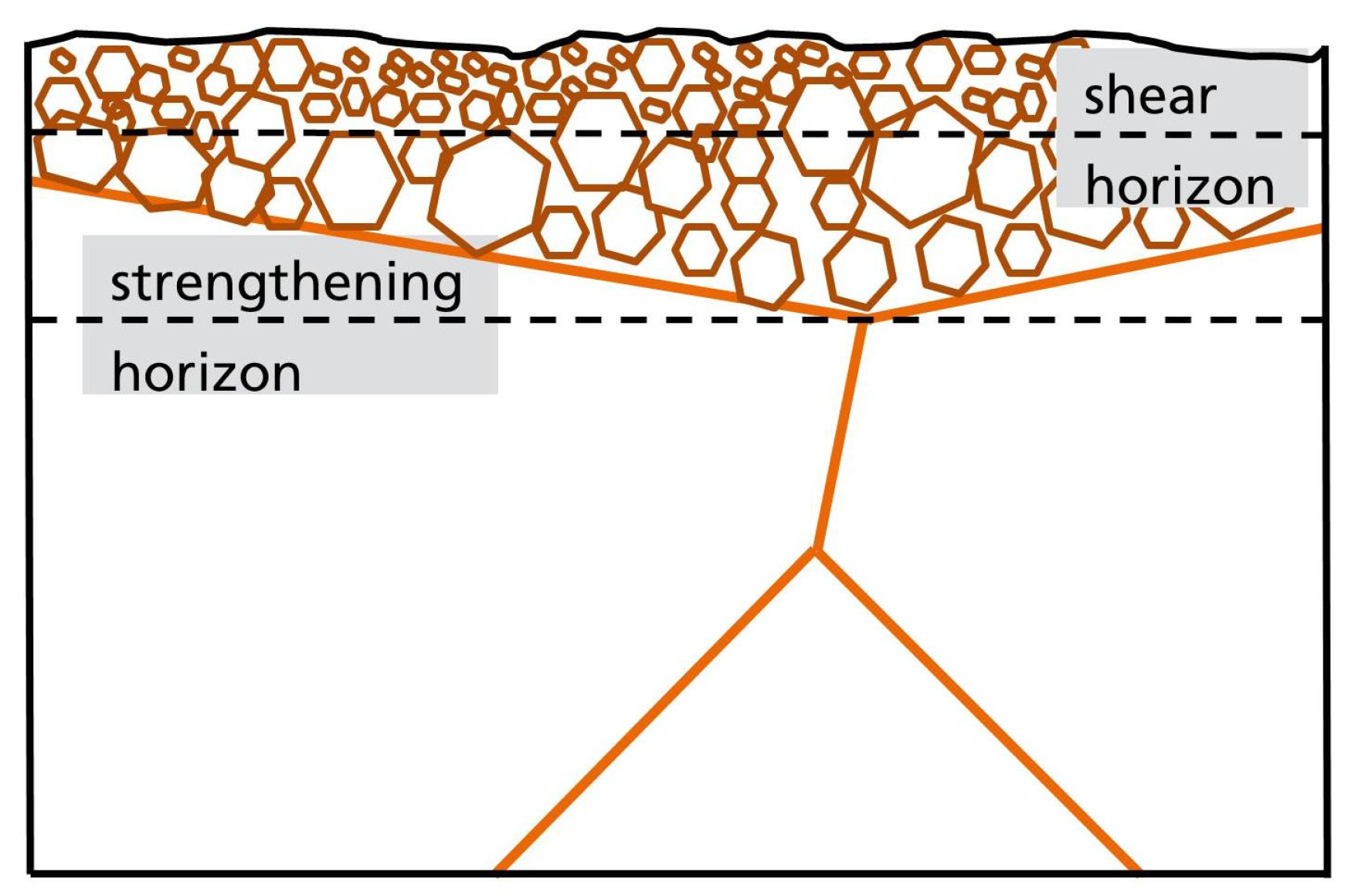
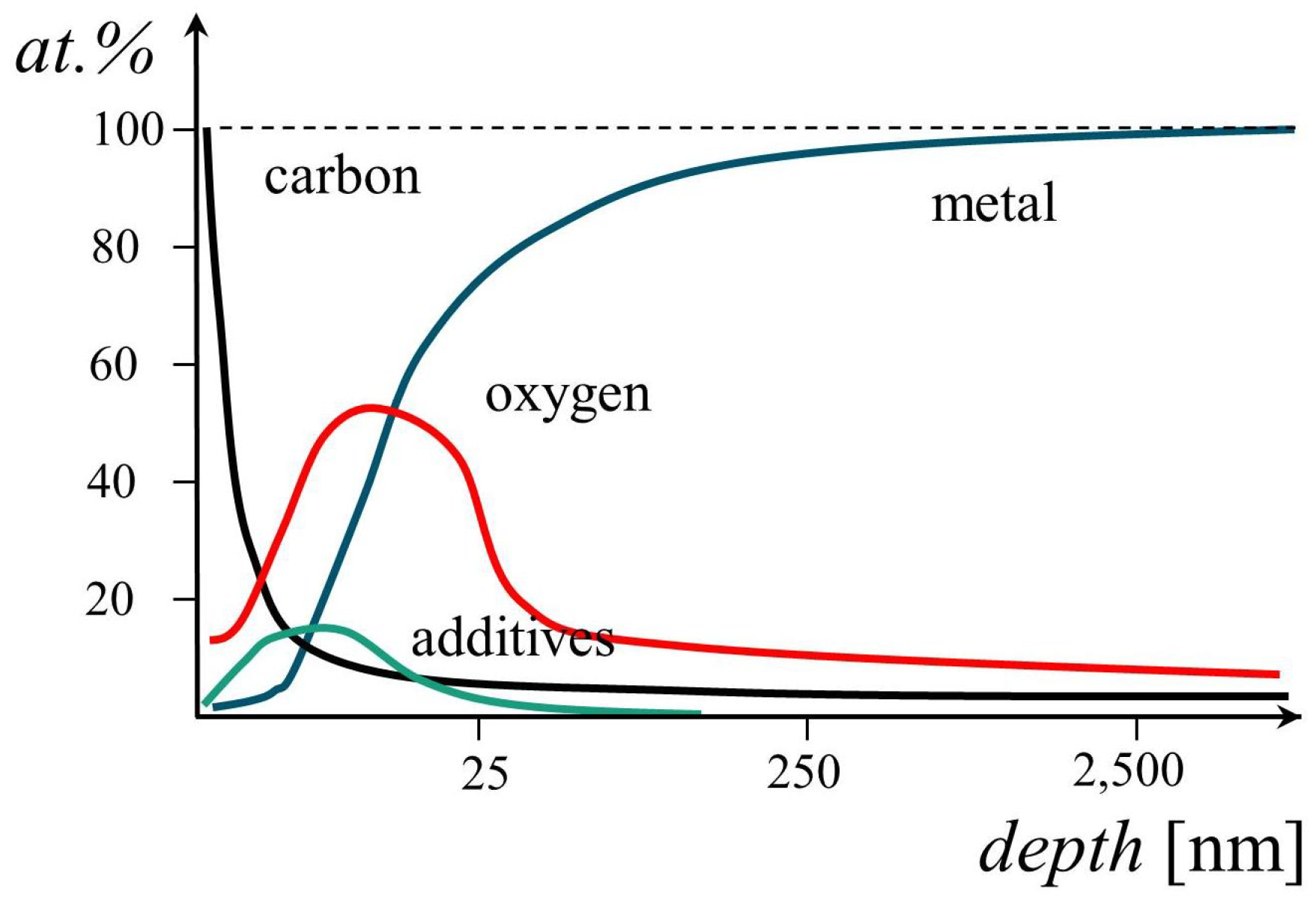
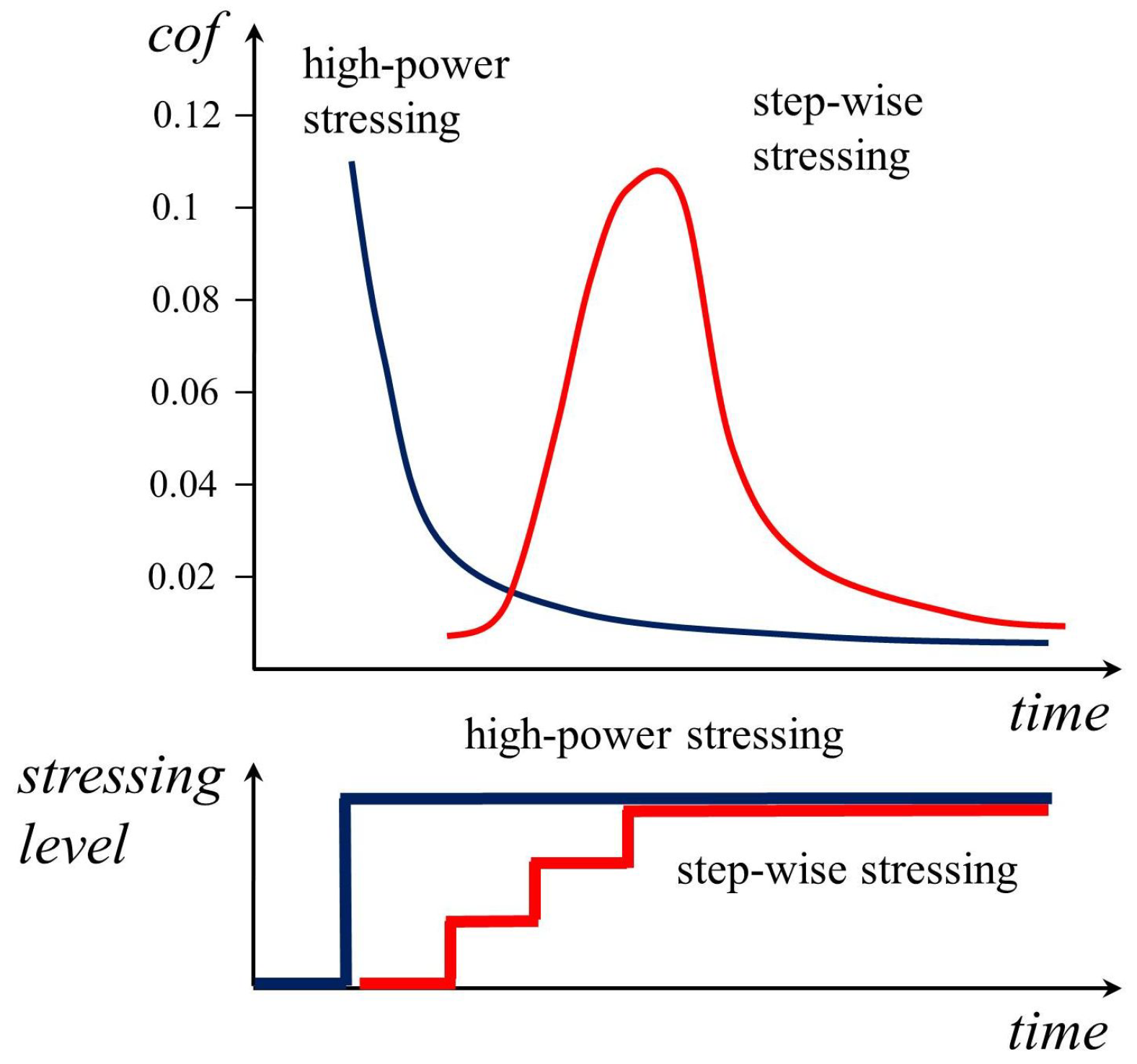
© 2018 by the author. Licensee MDPI, Basel, Switzerland. This article is an open access article distributed under the terms and conditions of the Creative Commons Attribution (CC BY) license (http://creativecommons.org/licenses/by/4.0/).
Share and Cite
Scherge, M. The Running-in of Lubricated Metal-Metal Contacts—A Review on Ultra-Low Wear Systems. Lubricants 2018, 6, 54. https://doi.org/10.3390/lubricants6020054
Scherge M. The Running-in of Lubricated Metal-Metal Contacts—A Review on Ultra-Low Wear Systems. Lubricants. 2018; 6(2):54. https://doi.org/10.3390/lubricants6020054
Chicago/Turabian StyleScherge, Matthias. 2018. "The Running-in of Lubricated Metal-Metal Contacts—A Review on Ultra-Low Wear Systems" Lubricants 6, no. 2: 54. https://doi.org/10.3390/lubricants6020054
APA StyleScherge, M. (2018). The Running-in of Lubricated Metal-Metal Contacts—A Review on Ultra-Low Wear Systems. Lubricants, 6(2), 54. https://doi.org/10.3390/lubricants6020054




